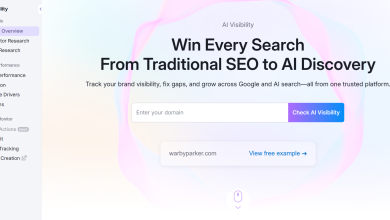
The advertising landscape has undergone a significant transformation, spurred by the rapid evolution of digital technology. In this era of constant connectivity, traditional advertising methods no longer suffice to capture the attention of a digitally savvy audience.
Businesses are now compelled to adopt an omnichannel strategy in the interest of establishing a cohesive and consistent brand presence across multiple platforms. This approach not only increases engagement but also enhances brand consistency and customer connection by delivering a unified messaging experience, regardless of the channel or medium through which the audience interacts with the brand.
Enter Digital Out-of-Home (DOOH) advertising, a dynamic player in the arena of omnichannel marketing. Unlike its static predecessors, DOOH leverages digital technology to present engaging, interactive content in public spaces. From vibrant displays at bus stops to interactive screens in shopping centers, DOOH offers a fresh and flexible approach to reaching audiences on the go. Its integration into omnichannel strategies offers businesses a unique opportunity to connect with consumers in both the physical and digital realms.
This article sets out to explore the significant contributions of DOOH to the success of omnichannel marketing campaigns. By delving into some key advantages this innovative form of advertising offers, it aims to provide valuable insights for business owners looking to modernize their approach to marketing.
Bridges the Online and Offline Worlds
DOOH excels in seamlessly connecting the digital and physical aspects of advertising, thereby creating a unified marketing ecosystem that resonates with consumers. Establishing this balance is crucial in the interconnected contemporary world, where the lines between online and offline experiences are increasingly blurred.
For example, a digital billboard that interacts with consumers through QR codes or social media prompts captures their attention in the physical space and subsequently guides them to engage with the brand online. This strategy extends the brand’s reach beyond the consumer’s immediate physical location and encourages ongoing engagement through digital channels.
Such interactive campaigns exemplify how DOOH can enhance the customer’s journey by creating multiple touchpoints that connect the online and offline worlds. The integration of digital elements into outdoor advertising encourages a more interactive and engaging consumer experience. By facilitating a direct pathway from physical ads to digital platforms, DOOH ensures that the marketing message is consistent and continuous.
Enhances Customer Engagement
DOOH is dynamic and interactive by nature, and these qualities are what makes it able to engage with customers more deeply than traditional advertising methods. Digital displays are eye-catching and can also be updated frequently to showcase the latest offerings or tailored content that speaks directly to the viewers’ interests and needs. This adaptability keeps the content fresh and relevant, which in turn increases the likelihood of capturing the attention of passersby and making a lasting impression.
Moreover, the interactive features of many DOOH installations, such as touchscreens and augmented reality experiences, invite consumers to engage with the brand on a more personal level. By actively involving the audience in the advertising content, DOOH transforms passive viewers into active participants. This engagement helps the customer feel more deeply connected to the brand and encourages repeat interactions across all marketing channels.
Leverages Data for Targeting
Data analytics in DOOH advertising harnesses advanced technologies to collect and interpret vast amounts of data, granting companies insights into consumer behaviors and preferences. This process often involves the use of sensors, cameras, and mobile data to gather information on audience demographics, dwell times, and engagement levels with digital displays. Sophisticated algorithms then analyze this data to identify patterns and trends, such as peak viewing times and the types of content that resonate with specific audience segments.
The strategic use of data analytics in DOOH advertising allows businesses to develop highly targeted and effective marketing campaigns. Advertisers can analyze demographic information, consumer behavior, and real-time data and utilize this information to tailor their messages to specific audiences at the most opportune moments. For instance, data on pedestrian traffic patterns can inform the scheduling of ads, ensuring they are displayed when the target demographic is most likely to be present. These more targeted advertisements are both more relevant and more impactful.
Increases Brand Awareness and Recall
The visual impact of DOOH advertising is unparalleled in its ability to boost brand awareness and improve recall. With its large, vibrant, and ever-changing displays, DOOH captures attention in a way that traditional media cannot. This visibility is crucial in crowded marketplaces where consumers will be looking expressly for businesses that stand out from the herd.
Updates in Real Time
One of the most significant advantages of DOOH advertising is its flexibility, which makes it hospitable to real-time communication. This means that advertisers can respond quickly to changes in the market, align ads with current events, or even adjust messages based on the time of day or weather conditions. Such timely and relevant advertising is not just more engaging, but it also demonstrates the brand’s adaptability and connection to the consumer’s world. Real-time updates ensure that the content remains fresh and relevant, which helps maintain consumer interest and engagement over time.
DOOH offers unparalleled opportunities for engagement, targeting, and real-time interaction that make it a natural cornerstone of effective omnichannel marketing. Modern businesses should thus leverage DOOH to enhance their connection with consumers and achieve a memorable, consistent brand experience across every channel. As the modern world grows even more digital, brands will need to integrate DOOH into their marketing to solidify their presence in the lives of their customers.







